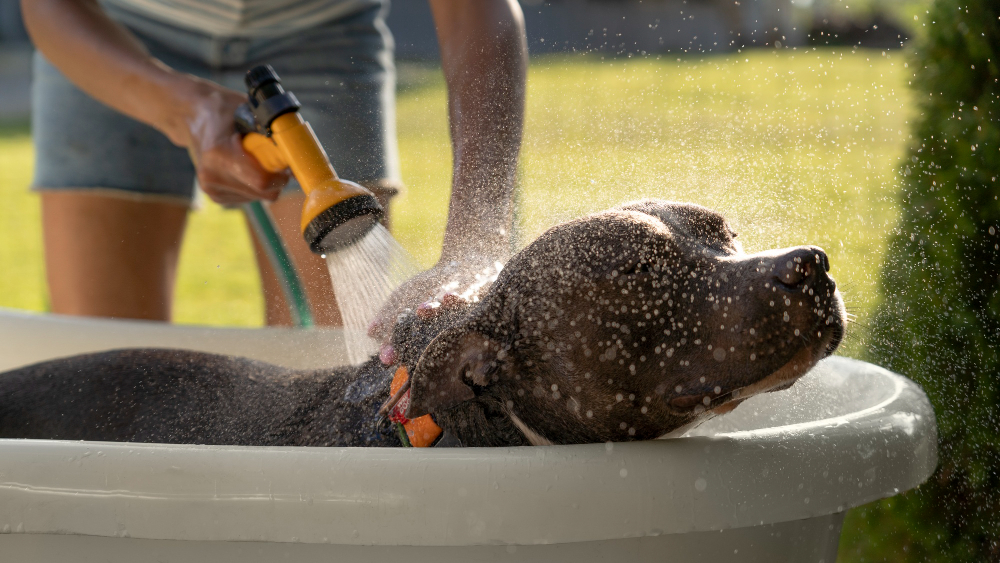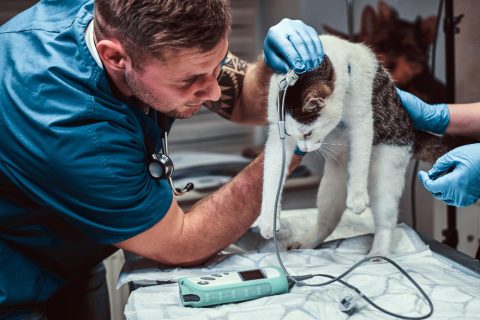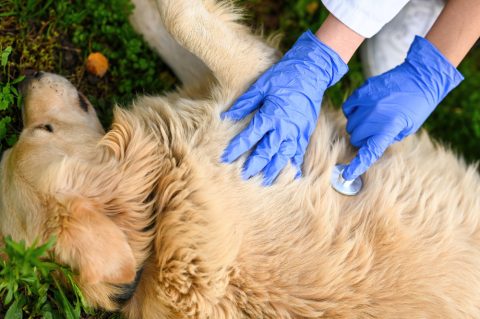Heatstroke in pets isn’t just a summertime inconvenience—it’s a life-threatening emergency. Unlike humans, pets can’t strip off layers or sweat to regulate their body temperature. Understanding the causes, symptoms, and first aid response to heatstroke can save your pet’s life, whether you’re lounging at home or vacationing at a pet-friendly hotel in San Diego.
Contents
Why Pets Are More Vulnerable to Heat Than Humans
Lack of Sweat Glands and Temperature Regulation
Most pets, especially cats and dogs, cool down by panting or limited sweating through paw pads. This method is far less efficient than human sweating, making them highly vulnerable during hot weather. Even in mildly warm temperatures, a pet can overheat quickly, especially if there’s poor ventilation or high humidity.
Common Heatstroke Triggers
Some of the most common causes of heatstroke include:
- Excessive exercise in warm weather
- Being left in a parked car or sunroom
- Poor ventilation in enclosed spaces
- Lack of access to drinking water or shade
A pet lounging on a sunny patio with no access to shade or water, for instance, is at serious risk—even if the temperature doesn’t feel scorching to you.
Which Pets Are Most at Risk
Flat-Faced Breeds and Thick-Coated Pets
Breeds like Bulldogs, Pugs, and Persian cats have compact airways that make breathing more difficult, particularly when they’re overheated. Likewise, breeds with thick or long coats, such as Huskies and Maine Coons, trap heat more easily.
Seniors, Kittens, and Pets with Medical Conditions
Young pets, seniors, and those with pre-existing conditions—like heart or lung disease—are significantly more susceptible. Pets dealing with obesity or conditions like IVDD (intervertebral disc disease), which is sometimes covered by specialized pet insurance, may struggle more with temperature regulation.
Early Warning Signs of Heatstroke
In Dogs
- Heavy or distressed panting
- Excessive drooling
- Lethargy or confusion
- Bright red gums or tongue
- Vomiting or diarrhea
- Weakness or collapse
In Cats
Cats may be more subtle, but signs can include:
- Open-mouth breathing or panting
- Restlessness or agitation
- Drooling
- Reddened gums
- Vomiting or staggering
If your furry friend is showing any of these signs, it’s time to act fast.

Emergency First Aid Steps
Cooling Before Transport
The golden rule for managing heatstroke is “cool first, transport second.” Immediate steps include:
- Move your pet to a shaded, cool, or air-conditioned area.
- Pour cool (not cold) water over their body. Avoid ice water, as it can trigger shock.
- Use a fan or breeze to enhance evaporative cooling.
- Offer small sips of water, but don’t force them to drink.
For more intense cases, immerse your pet’s body (excluding the head) in lukewarm water. Keep their head elevated and dry to avoid water inhalation, especially in flat-faced breeds.
What Not to Do
- Never place wet towels over your pet, as they can trap heat.
- Avoid ice-cold water or sudden temperature shocks.
- Don’t delay in seeking veterinary advice, even if your pet starts to look better.
When to Call a Vet
Even after your pet appears to recover, internal damage or complications may develop. Call your vet or an emergency clinic like Pet Emergency Chicago for immediate advice. If symptoms persist, your vet may recommend monitoring or treatments like IV fluids, oxygen, or cooling therapy.
How Vets Handle Pet Heatstroke
Temperature Checks and Supportive Care
Vets will assess your pet’s core temperature and vital signs. A rectal temperature above 104°F is a serious concern. Treatment might include intravenous fluids, medication to reduce inflammation, or bloodwork to check for organ damage.
Monitoring for Delayed Symptoms
Heatstroke can have delayed effects on organs like the liver and kidneys. Even if initial signs subside, monitoring may be needed for up to 48 hours.
Tips to Prevent Heatstroke
Walk Timing, Hydration, and Shade
- Walk your dog early in the morning or late in the evening to avoid midday heat.
- Always carry a portable water bottle during outings.
- Check the ground temperature; if it’s too hot for your hand, it’s too hot for paws.
- Create shaded areas in your yard or patio.
At Home, in Hotels, and on the Road
- Never leave pets in cars or sunrooms—even with windows cracked.
- Book pet-friendly hotels with climate control features.
- Pack pet-safe products like a pet grooming vacuum or pet odor eliminator to keep them clean and cool.
- Consider installing a pet waste station and pet safe exterminator services to keep your backyard fresh and safe.
- Groom your pet regularly, especially if they have a thick coat.
Final Thoughts: Prevention Is the Best Cure
Heatstroke in pets is serious but entirely preventable. By knowing the risks and acting fast when symptoms appear, you can protect your pet whether you’re at home or checking into a pet-friendly hotel in San Diego. Equip your pet with summer essentials, schedule regular pet wellness exams, and keep your vet’s number handy—because nothing says paradise like a happy, healthy pet.
If you’re unsure whether your pet insurance covers emergencies like heatstroke or IVDD, now is a great time to review your plan. A little preparation goes a long way toward keeping your furry family safe in the summer sun.








